The Colon Theatre, Buenos Aires
Important orchestras, soloists, ballet companies, and foreign and Argentine singers perform in the most important cities of the country all year round. Since 1848, the annual lyric season takes place in Buenos Aires. However, the musical tradition of the country goes back five hundred years to the XVlth century, when Spanish missionaries and conquerors arrived on the continent.
In the first decade of last century, many musical composers arrived in Argentina from Europe. Meanwhile, great Argentine musicians such as Alberto Williams, Pablo Beruti, Drangosh, Garcia Mansilla and Julián Aguirre were sharing public preferences. Francisco Hargraves incorporated native music or folk music to classic halls.
Folk music with native influence is characteristic of the interior of the country, and has a large number of listeners, both in Argentina and other parts of the world. Zambas, cuecas, vidalas, carnavalitos, the pericón, malambos, milongas, chacareras, etc. are deeply rooted in the culture of the nation, and are highly popular. Composers and performers like Atahualpa Yupanqui, Ariel Ramirez, Jaime Torres, Mercedes Sosa and groups such as Los Chalchaleros and Los Fronterizos have obtained national and international recognition.


Bandoneon and a Tango couple dancing in La Boca, Buenos Aires
Tango is Buenos Aires' representative music. It was born in the outskirts of the city and has spread all over the world. Composers, orchestra directors, players and singers such as Carlos Gardel, Enrique S. Discépolo, Homero Manzi, Catulo Castillo, Anibal Troilo, Osvaldo Pugliese, Mariano Mores, Horacio Salgan, Eladia Vázquez, Carlos Di Sarli, Ángel Vargas, Juan D´Arienzo, Edmundo Rivero, Tita Merello, Susana Rinaldi, José Libertella, Ubaldo de Lío, Alberto Marino Daniel Binelli, Pablo Ziegler, Néstor Marconi, Juan José Mosalini, Horacio Ferrer and notably Astor Piazzolla are some of the great innovators who have introduced tango in the musical stream of universal expression.
In the field of classic music, groups like the "Camerata Bariloche" and composers like Felipe Boero, Hector Panizza, Schiuma, Andre, Lopez Buchardo, Celia Torra, Gilardo Gilardi, Ana Carrique, Guastavino, de Rogatis, Lía Cimaglia Espinosa, Suffern, Sciamarella, Juan José Castro and Alberto Ginastera are major representatives of the importance of the Argentine musical production which has been honoured all around the world.
Argentina has given to our time many directors, soloists and dancers that gained international approval from both the critics and the public alike. Among the most outstanding are conductors like Mariano Drago, Washington Castro, Juan Jose Castro, Martini and Veltri; Marta Argerich, Bruno Gelber, Silvina Kersenbaum, Martha Noguera, de Raco, Caracciolo, soloists such as Daniel Baremboim and Alberto Lisy, and ballet dancers such as Liliana Belfiore, Olga Ferri, Norma Fontenla, José Neglia, Iris Scaccheri and Julio Bocca.

